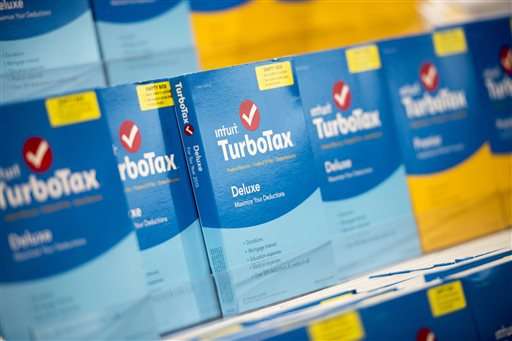

As though paying taxes isn’t annoying enough, prices and plans for tax software keep changing.
What was best for you last year isn’t necessarily so now. Software makers will try to hook you in with free options, then get you to upgrade along the way.
Here are some tips for navigating tax software:
___
SHOULD YOU USE A TAX PROFESSIONAL?
It’s easy to pay someone to prepare your taxes, but doing it yourself has benefits. It’s often cheaper, and you may get a better sense of how to legally reduce your tax burden next year. Professionals can offer guidance, but you may learn more by figuring it out yourself.
All major tax software will guide you with questions, much like an interview, to help you find savings: Do you have kids? Did you make charitable contributions? Many will also retrieve your records electronically, so that you don’t have to enter numbers yourself and potentially make mistakes—though this is where you might be asked to upgrade.
Even small businesses and self-employed individuals with complicated returns can use software. Some higher-end packages include help lines with humans on the other end.
___
DESKTOP OR ONLINE?
You can download software to your computer or use an online program. Online programs are usually cheaper, though households filing multiple returns can share a download.
Through mobile apps, online software also has some features that make it easier on filers, like the ability to import data from your W-2 form by taking a picture of it.
___
CAN YOU FILE FOR FREE?
TurboTax , TaxAct and H&R Block have charts to compare their free and paid plans. Those comparison sites also have tools that guide you to a plan based on factors like whether you’ve sold stocks. Keep in mind that their recommended plans typically aren’t free.
Even if you choose a free plan, paying a fee might be unavoidable.
“Free” federal-tax software often comes with a filing fee. Don’t expect to print the return and mail it in to avoid the fee, as you might be restricted from doing so without paying. Even when you see free e-filing, check to see if the state return is included—it’s usually not. If you moved last year, you might also have to pay for a second state.
TaxAct offers a completely free online option for both federal and state—but if you have itemized deductions or income from stocks, you’re booted up. TurboTax offers the completely free deal until Thursday only, after which it charges for state taxes. H&R Block charges for state, but offers itemized deductions in its free plan for federal taxes.
Resist any offers to upgrade until you really have to, as it can be tough to drop back down later. Don’t use your credit card to pay taxes or your refund to pay for tax software, as fees typically apply.
___
IS IT SAFE?
It might seem unnerving to have your financial data sitting on some remote server, but using downloaded software, with data kept on your PC, isn’t as safe as it might sound. Companies whose reputations depend on data security are probably better than you are at keeping machines secure, says Neill Feather, president of security company SiteLock.
But Feather says there’s no such thing as 100 percent security, and hackers are going to find these companies to be richer targets than your lonely PC.
That’s where additional safeguards come in.
When you sign into TurboTax or TaxAct, a special code is sent to your email address. Hackers who get your tax password still wouldn’t have that code in your email inbox. (Don’t use the same password for your email.)
H&R Block gives you security questions, such as where your first job was, but someone could guess that from your Facebook profile. When setting up the security questions, add some numbers or memorable phrase to the answers to make them difficult to guess.
There have been cases of identity thieves filing taxes on your behalf and claiming the refund. Your best recourse is to file early before the thieves can.
[SOURCE:-phys]
